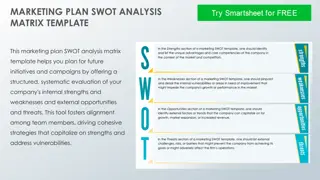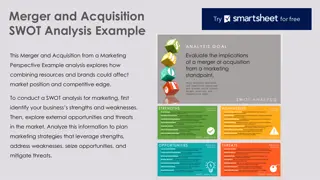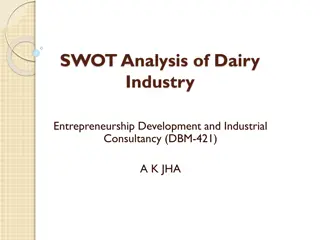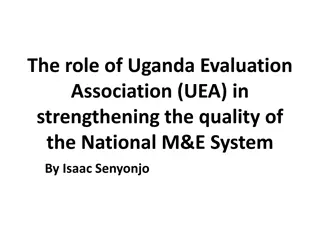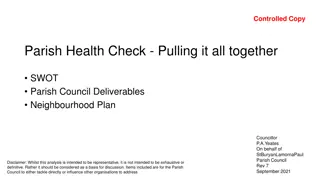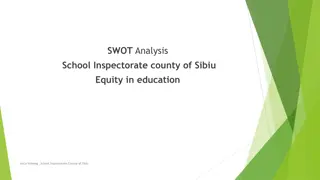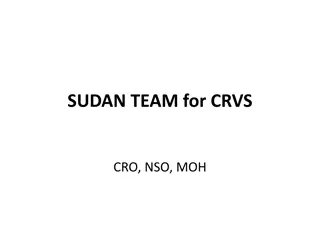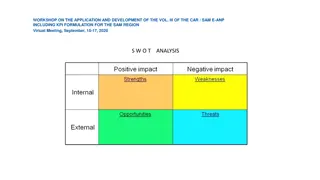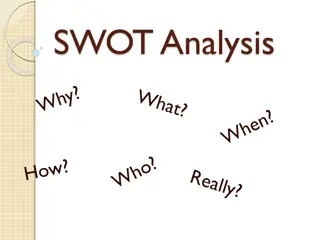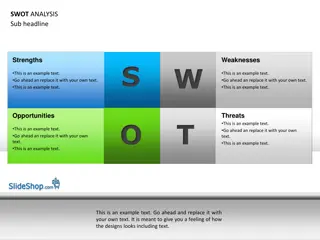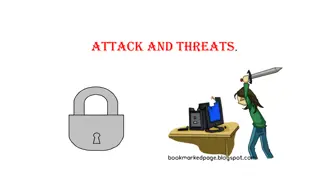SWOT Analysis: Strengths, Weaknesses, Opportunities, Threats
SWOT analysis is a strategic planning tool that helps identify internal strengths and weaknesses, as well as external opportunities and threats. By evaluating these factors, individuals and businesses can develop strategies to leverage strengths, address weaknesses, seize opportunities, and mitigate threats. Understanding how to conduct a SWOT analysis can lead to informed decision-making and improved outcomes in various aspects of life and work.
Download Presentation

Please find below an Image/Link to download the presentation.
The content on the website is provided AS IS for your information and personal use only. It may not be sold, licensed, or shared on other websites without obtaining consent from the author.If you encounter any issues during the download, it is possible that the publisher has removed the file from their server.
You are allowed to download the files provided on this website for personal or commercial use, subject to the condition that they are used lawfully. All files are the property of their respective owners.
The content on the website is provided AS IS for your information and personal use only. It may not be sold, licensed, or shared on other websites without obtaining consent from the author.
E N D
Presentation Transcript
SWOT? W H A T C A N I T D O F O R M E ? W H A T I S I T ? S.W.O.T. S.W.O.T. an acronym an acronym that stands for that stands for S Strengths, trengths, W Weaknesses, eaknesses, O Opportunities, pportunities, T Threats. hreats. It enables a program, It enables a program, department, or unit department, or unit to assess a to assess a changing changing environment and environment and respond proactively. respond proactively.
LETS SEE WHERE WE ARE: INTERNAL Assess our strengths and weakness Assess our strengths and weakness items often program: program: Strengths o What do we do well? o What do we do better than anyone else? o What unique resources do we have that others don t? o What do others see as your strengths? Weaknesses o What factors that are within your control detract from your ability to obtain or maintain a competitive edge? o What areas need improvement to accomplish your objectives or compete with your strongest competitor? o What do people in your market see as weaknesses? o What factors cause you to lose market share? items often internal internal to our department, area, or to our department, area, or
LETS SEE WHERE WE ARE: EXTERNAL Assess our opportunities and threats Assess our opportunities and threats items often program: program: Opportunities o What opportunities exist in your market or the environment that you can benefit from? o Has there been recent market growth or have there been other changes in the market that create an opportunity? Is the opportunity ongoing, or is there just a window for it? o Is the perception of your program positive--why? Tip Tip: Useful opportunities can come from changes in technology/markets on both a broad and narrow scale; changes in government policy related to your field; changes in social patterns, population profiles, lifestyle changes, etc.; and local events. Also, look at your strengths and ask if these might open up any opportunities and whether by eliminating some of your weaknesses might open up opportunities. Threats o What obstacles do you face? o What are your competitors doing? o Is changing technology threatening your position? o Do you have unsustainable cost issues? o Are quality standards or specifications changing rapidly? items often internal internal to our department, area, or to our department, area, or
SWOT TIPS Only accept Only accept precise, precise, verifiable verifiable statements statements Keep lists of Keep lists of factors lean and factors lean and focused focused prioritize/rank prioritize/rank order them order them Make sure Make sure action ideas are action ideas are carried forward carried forward throughout the throughout the planning, planning, development, development, and and implementation implementation process process

 undefined
undefined






